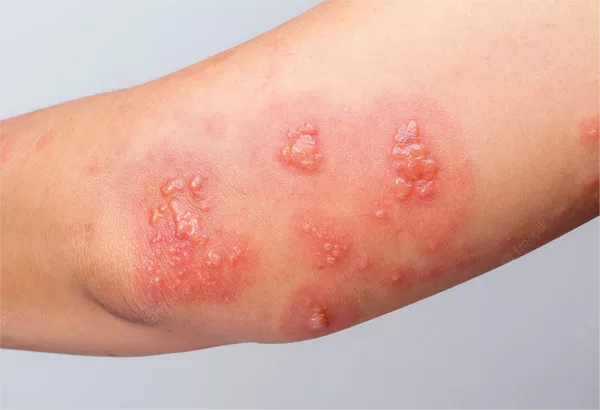Chickenpox, caused by the varicella-zoster virus (VZV), is a highly contagious illness characterized by a distinctive rash and accompanying symptoms. Among the myriad discomforts experienced by those afflicted, the sensation of burning stands out as a particularly distressing symptom. In this comprehensive guide, we delve into the intricacies of this burning sensation in chickenpox, exploring its underlying causes, associated symptoms, and effective management strategies.
The Pathophysiology of Burning Sensation in Chickenpox
The burning sensation experienced during chickenpox arises from the inflammatory response triggered by the varicella-zoster virus. Upon initial infection, the virus invades the body’s cells, particularly those of the skin and mucous membranes. This invasion elicits a robust immune response, leading to the release of inflammatory mediators such as histamine, prostaglandins, and cytokines.
Histamine, a key player in the body’s allergic response, contributes to vasodilation and increased vascular permeability, resulting in redness, swelling, and the characteristic rash associated with chickenpox. Concurrently, prostaglandins sensitize pain receptors, amplifying the perception of discomfort, including burning sensations. Furthermore, cytokines, signaling molecules involved in immune regulation, orchestrate the recruitment of immune cells to the site of infection, exacerbating local inflammation and discomfort.
Symptoms and Clinical Presentation
The burning sensation in chickenpox typically accompanies the appearance of the characteristic rash, which emerges in successive waves over several days. Initially, the rash manifests as small, red papules that progress to fluid-filled vesicles before crusting over and forming scabs. The burning sensation is most pronounced in areas where the rash is concentrated, such as the trunk, face, and extremities.
In addition to the burning sensation, individuals with chickenpox may experience a constellation of symptoms, including fever, malaise, headache, and generalized itching. The severity of symptoms can vary widely, with some individuals experiencing mild discomfort while others endure more pronounced discomfort and systemic illness.
Differential Diagnosis and Complications
While the presence of a rash is characteristic of chickenpox, several other conditions can present with similar symptoms, necessitating a thorough differential diagnosis. Varicella-zoster virus infection can sometimes be mistaken for other viral exanthems, such as measles or rubella, particularly in the absence of typical vesicular lesions.
Complications of chickenpox, though relatively uncommon, can pose significant health risks, especially in vulnerable populations such as infants, pregnant women, and individuals with compromised immune systems. Complications may include bacterial superinfection of skin lesions, pneumonia, encephalitis, and, rarely, disseminated varicella with widespread organ involvement.
Management Strategies
Effective management of the burning sensation and other symptoms associated with chickenpox centers on alleviating discomfort, preventing secondary infections, and reducing the risk of complications. Pharmacological and non-pharmacological interventions play integral roles in comprehensive patient care.
1. Symptomatic Relief: Over-the-counter analgesics such as acetaminophen or ibuprofen can help alleviate fever and discomfort associated with chickenpox. Additionally, calamine lotion or colloidal oatmeal baths may provide relief from itching and burning sensations.
2. Antiviral Therapy: In certain cases, particularly in individuals at high risk of complications, antiviral medications such as acyclovir or valacyclovir may be prescribed to shorten the duration of illness and reduce the severity of symptoms.
3. Hydration and Rest: Adequate hydration and rest are paramount in supporting the body’s immune response and promoting recovery. Encouraging ample fluid intake and sufficient rest can help mitigate symptoms and prevent dehydration, especially in children and individuals with fever.
4. Preventive Measures: Strict adherence to infection control measures, including frequent handwashing and isolation of affected individuals, is crucial in preventing the spread of chickenpox to susceptible individuals, particularly those who are immunocompromised or unvaccinated.
5. Complication Management: Prompt recognition and management of potential complications, such as bacterial superinfection or pneumonia, are essential in optimizing patient outcomes. Close monitoring and appropriate medical intervention may be necessary, especially in high-risk individuals.
Conclusion
The burning sensation in chickenpox, though distressing, is a transient symptom that typically resolves with the resolution of the underlying infection. By understanding the pathophysiology of chickenpox and implementing appropriate management strategies, healthcare providers can effectively alleviate discomfort, prevent complications, and support patients on the path to recovery. Through comprehensive patient education and adherence to preventive measures, the burden of chickenpox-related morbidity can be minimized, contributing to improved health outcomes and well-being for affected individuals.
Related Topics:



























